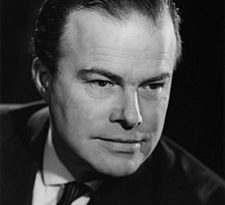Diana Johnson – 2015 Parliamentary Question to the Department of Health
The below Parliamentary question was asked by Diana Johnson on 2015-12-14.
To ask the Secretary of State for Health, how many press, communication and public relations staff are employed by (a) his Department, (b) Public Health England, (c) NHS England, (d) Monitor, (e) the Care Quality Commission, (f) the National Institute for Health and Care Excellence, (g) NHS Blood and Transplant, (h) the NHS Litigation Authority, (i) the Trust Development Authority, (j) the Human Fertilisation and Embryology Authority, (k) the Human Tissue Authority, (l) the NHS Business Service Authority, (m) Health Education England and (n) the Medicines and Healthcare Products Regulatory Agency; how many of those employees are paid more than (i) £50,000 and (ii) £100,000; and what the total expenditure was on press and communication by each of those organisations in the most recent year for which figures are available.
Jane Ellison
Below are details of communications headcount and spend for the organisations requested.
On headcount, to ensure consistency, all organisations have provided information according to the following criteria for public relations (PR) and communications staff:
– Press and PR
– Stakeholder relations
– Campaigns (including marketing and strategic communications)
– Digital Communications (not IT/digital service teams)
– Internal Communications
On communications spend, we have provided figures for 2014/15, which is the most recent year for which figures are available.
The figures on spend are split between major communications and marketing spend costs (submissions of above £100,000 which are assessed through the Cabinet Office Efficiency and Reform Group process) and the remaining admin and minor programme spend costs. Major programme spend costs cover budgets for public information campaigns – such as smoking cessation, blood and organ donor recruitment, dementia friends, cancer diagnosis and immunisation campaigns.
The figures on major campaign programme spend (in column three below) reflect the amount of money requested in the Cabinet Office submission. In some instances, the final spend on communications was lower, as some of the budget was reappropriated for operational requirements or was unused and returned to central budgets.
|
Organisation |
Number of Communications Staff |
Major campaign programme spend (Activity over £100,000 approved in 2014/15) |
Admin (staff / non-staff) and minor programme spend 2014/15 (£) |
|
Department of Health |
106.5 |
1,129,507 |
6,968,643 |
|
Public Health England |
115.5 |
57,162,157* |
8,134,900 |
|
NHS England |
69 |
9,721,465 |
3,292,340 |
|
Monitor |
21 |
n/a |
1,697,000 |
|
Care Quality Commission |
34 |
650,000 |
6,671,635 |
|
NICE |
74 |
n/a |
2,427, 944 |
|
NHS Blood & Transplant |
124.59 |
4,862,257 |
8,689,004 |
|
NHS Litigation Authority |
3 |
n/a |
315,329 |
|
NHS Trust Development Authority |
12 |
n/a |
926,023 |
|
Human Fertilisation & Embryology Authority |
6.5 |
n/a |
381,443 |
|
Human Tissue Authority |
3.2 |
n/a |
291,454 |
|
NHS Business Services Authority |
17.6 |
1,028,800 |
823,586 |
|
Health Education England |
32 |
n/a |
2,219,301 |
|
Medicines and Healthcare products Regulatory Authority |
28 |
n/a |
1,987,441 |
*See breakdown of Public Health England campaign spend in table below
|
Public Health England Campaign Spend in 2014/15 |
Cost |
|
Smokefree (tobacco control) includes Stoptober and January Health Harms campaigns |
£11,580,000 |
|
PHE Smokefree Cars |
£1,400,000 |
|
Be Clear on Cancer |
£11,685,000 |
|
Stroke- ACT Fast |
£975,000 |
|
Change4life |
£11,514,248 |
|
Start4life |
£3,200,000 |
|
Rise Above |
£1,970,000 |
|
DH PHE Dementia Friends Campaign |
£4,000,000 |
|
HIV Prevention England 14/15 |
£550,000 |
|
Sexual Health Information Family Planning Association |
£262,000 |
|
Care & Support Reforms Phase 1 |
£1,950,000 |
|
Dementia Friends Phase 2 |
£1,500,000 |
|
Seasonal Flu Campaign |
£1,868,000 |
|
PHE Alcohol Campaign |
£1,825,000 |
|
PHE, Seasonal Flu, respiratory and hand hygiene 2014/15 |
£500,000 |
|
TOTAL |
£54,779,248 |
We can provide information on staff paid in different salary bands. However, due to differing bands between organisations and differing geographical weighting, this does not allow us to provide figures for the number of employees paid more than £50,000 and £100,000.


